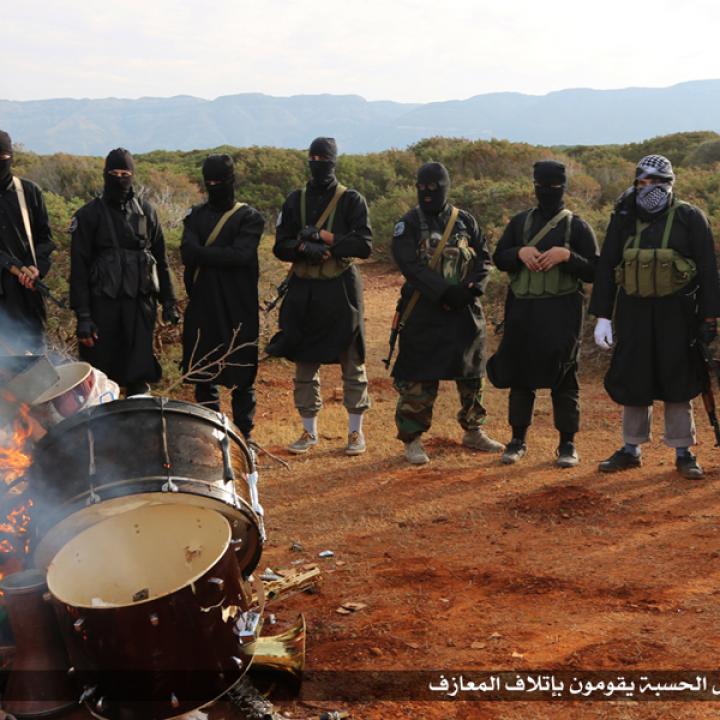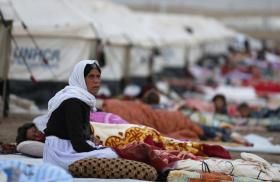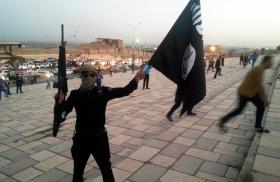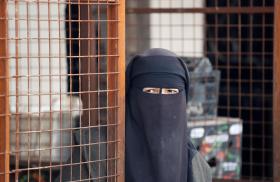
- Policy Analysis
- PolicyWatch 2934
Foreign Fighters in Libya: Consequences for Africa and Europe

Part of a series: Counterterrorism Lecture Series
or see Part 1: U.S. Efforts against Terrorism Financing: A View from the Private Sector
As the fight against the Islamic State shifts from retaking territory to preventing regrowth, a jihadism scholar and the former deputy head of AFRICOM discuss what Washington should learn from the group's activities in Libya.
On February 16, Aaron Zelin and Michael Franken addressed a Policy Forum at The Washington Institute as part of the long-running Stein Counterterrorism Lecture Series. Zelin is the Richard Borow Fellow at the Institute and author of its recent study "The Others: Foreign Fighters in Libya." Franken served in numerous senior military positions prior to retiring last fall, including deputy head of U.S. Africa Command (AFRICOM) and flag officer in U.S. Central Command's Plans and Strategy Office. The following is a rapporteur's summary of their remarks.
AARON ZELIN
Over the past several years, Libya's influx of foreign fighters has become the fourth-largest mobilization in jihadist history, behind only the Syria war, the Afghan jihad of the 1980s, and the 2003 Iraq war. Moreover, it represents the first time that radicalized East and West Africans have become deeply involved with jihads abroad instead of focusing on domestic insurgencies or terrorism.
According to jihadist sources, the first reports of mujahedin arriving in Libya came in March 2011, when the goal was to fight the Qadhafi regime. That December, Ansar al-Sharia in Libya (ASL) began to establish training, logistics, and facilitation networks, eventually building ties with Ansar al-Sharia in Tunisia (AST), al-Qaida in the Islamic Maghreb (AQIM), and jihadists in Syria. Over time, ASL and AST cooperated more closely, and Libya evolved into a fallback for AST and AQIM as they struggled to operate elsewhere.
In all, an estimated 2,600-3,500 foreign fighters have entered Libya in the past seven years, traveling there from as many as forty-one nations. These numbers are based on government reports from countries such as Tunisia, Kenya, Sudan, and Senegal, along with the attorney general's office in Libya and local reporting.
The Islamic State (IS) is the strongest jihadi group remaining in Libya today. After fighters streamed there from Syria in 2012-2013, the trend reversed in spring 2014. The majority of IS foreign fighters in Libya hailed from Tunisia, though the group has attracted a wide array of other nationalities, including Chad, Ghana, Kenya, Niger, Somalia, and Burundi.
One unique trend in Libya was the significant involvement of female fighters, which began in 2014. As with the men, the largest contingent (300) came from Tunisia, while others hailed from Australia, Chad, Egypt, Eritrea, Morocco, Niger, and other countries. Similar to Syria, most of these women were used as bait for marriages or to raise children as the next generation of mujahedin, but some of them did train for combat.
The foreign fighters moving in and out of Libya pose significant risks to other countries. Among them is the possibility of returnees carrying out external operations through "remote controlled" plotting by jihadist leaders.
MICHAEL FRANKEN
A renewed sense of major-power conflict is replacing the counterterrorism and nation-building strategy of the past fifteen years. This is not unexpected, as the Defense Department and the American political establishment are exhausted from two decades of nearly constant military deployments that have taken a toll on personnel, equipment, and infrastructure.
Terrorism today is less a struggle of ideas and more a function of religious, tribal, and economic grievances. Boredom, isolation, and herd mentality are common attributes among terrorist recruits. The proliferation of weapons has made actuating local and regional extremism easier, since leaders can inspire a following more readily (and in some cases become individually wealthy). This phenomenon is evident in northern Mali, where group allegiances rapidly change and members flow seamlessly between factions. Similarly, extremism in the Sinai is a localized issue with no direct relation to the IS core.
Each one of these threats requires its own solution, which must begin at the local level. In the Sinai, Egypt is not outwardly interested in U.S. participation, and other nations are better equipped to help Cairo combat extremism in the peninsula. What Washington can do on a larger scale, however, is urge states to limit extremist religious teachings and ideology, since it is much easier to prevent radicalization than to rehabilitate radicalized fighters.
Beyond counterterrorism, the United States needs to promote regional strategies that involve the international community. More important, the rule of law and governing bodies must come from the lowest possible level, not exclusively from external forces. In Libya, for example, Washington is hopeful that the country's citizenry can come to a single-nation solution on their own. Currently, however, there is little sense of urgency because salaries are being paid and people are being fed, so U.S. officials must take care not to yearn for reform and stabilization more than the Libyans themselves do.
Moving forward, the Pentagon should continue efforts to weaken al-Qaeda, IS, and their affiliates. It can do so by maximizing other nations' capabilities, containing Iranian and Russian aggression, supporting like-minded governments, and involving other powers such as China, Japan, India, and the European Union. Additionally, homegrown elections and legislation will be vital to preventing the spread of instability, as will economic and governance reform.
Yet these efforts are not without their challenges, including financial crises, resource scarcity, and population growth. Some fear that an economic downturn will keep China, the EU, and the United States from following through on their projects. Alternatively, political games played in Washington or by actors such as Russia and Turkey could hinder AFRICOM's activities in the region, as could trade barriers.
That said, the situation in Africa and the Middle East means that the United States will have stronger working relationships with the EU in both regions. Regarding Somalia, the country's leaders will have to work with a limited number of external partners to address their issues, since Washington and many other governments feel they have devoted enough time and resources there. In Mali and Niger, U.S. officials will continue supporting France, though they will resist becoming heavily involved in fighting Boko Haram in the Lake Chad region because they are skeptical of the value of U.S. involvement in such risky hotspots. Yet AFRICOM will certainly continue the regional counterterrorism mission established by the Office of the Secretary of Defense.
This summary was prepared by Aviva Weinstein.





